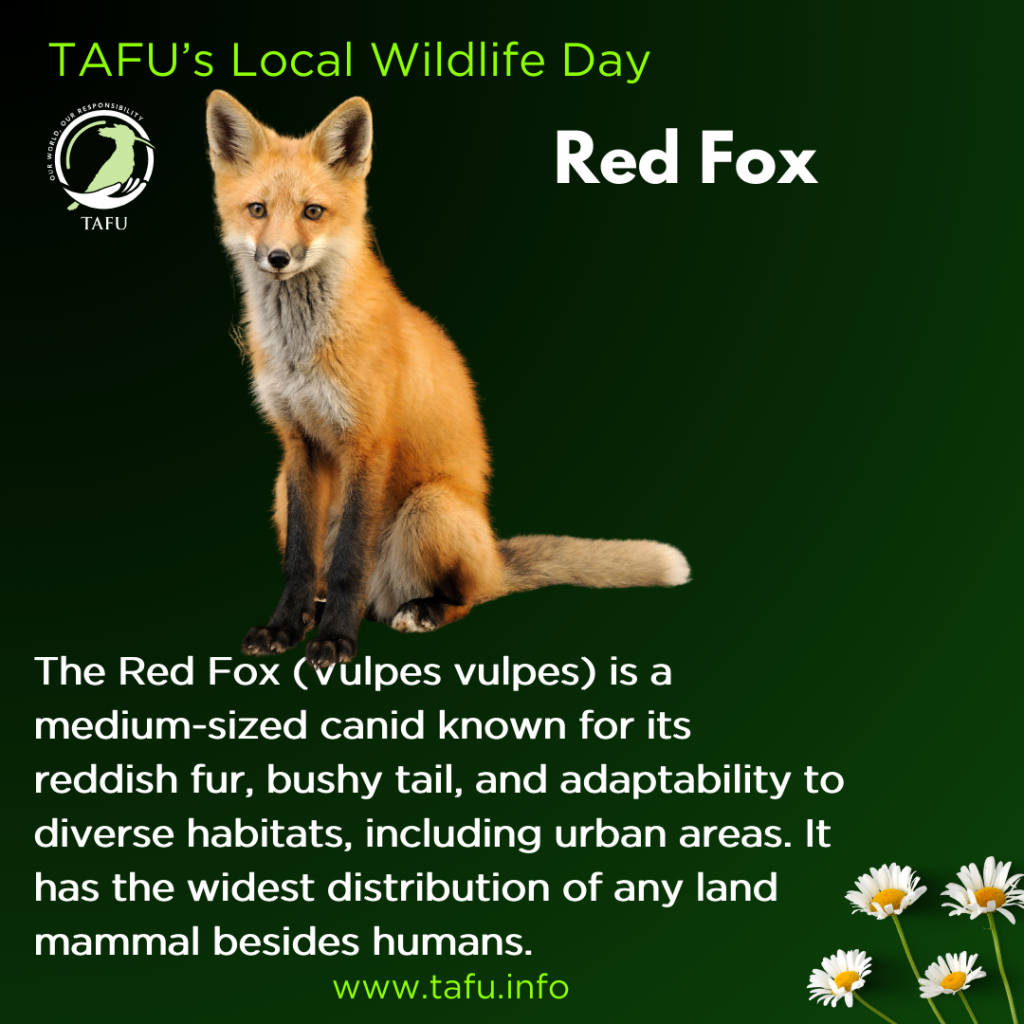Red Fox
As part of the countdown to TAFU’s Local Wildlife Day on the 11th of July – Species no. 20.
Stay tuned – 23 more days and 23 more species until then!
The Red Fox (Vulpes vulpes) is the largest and most widely distributed member of the true foxes. It inhabits a vast range across the Northern Hemisphere, including North America, Europe, Asia, and parts of North Africa. They is recognisable by its reddish-brown fur, white underbelly, and bushy tail often tipped with white. Adults typically measure 90–105 cm in length, including the tail, and weigh between 5–7 kg, though some can reach up to 14 kg.
Red foxes are highly adaptable, thriving in a variety of habitats from Arctic tundra to arid deserts. They prefer mixed landscapes with forests, grasslands, and even human-altered environments such as farmland and suburban areas. This adaptability has allowed them to expand their range, even being introduced to Australia where they are considered invasive.
These foxes are omnivorous, with a diet that includes small mammals, birds, insects, fruits, and vegetables. They are solitary hunters, using their keen sense of hearing to locate prey before pouncing on it. Red foxes are also known for their cunning and intelligence, often featured in folklore and mythology.
Red foxes live in family groups during the breeding season, with a dominant pair and their offspring. They dig dens, or “earths,” which may be used for several generations. Vocal communication is essential for red foxes, with a range of calls used to interact with family members and signal danger, which can be quite a surprise to us humans in urban environments. To help support red fox populations, it is important to maintaining natural habitats and aim not to use pesticides.

